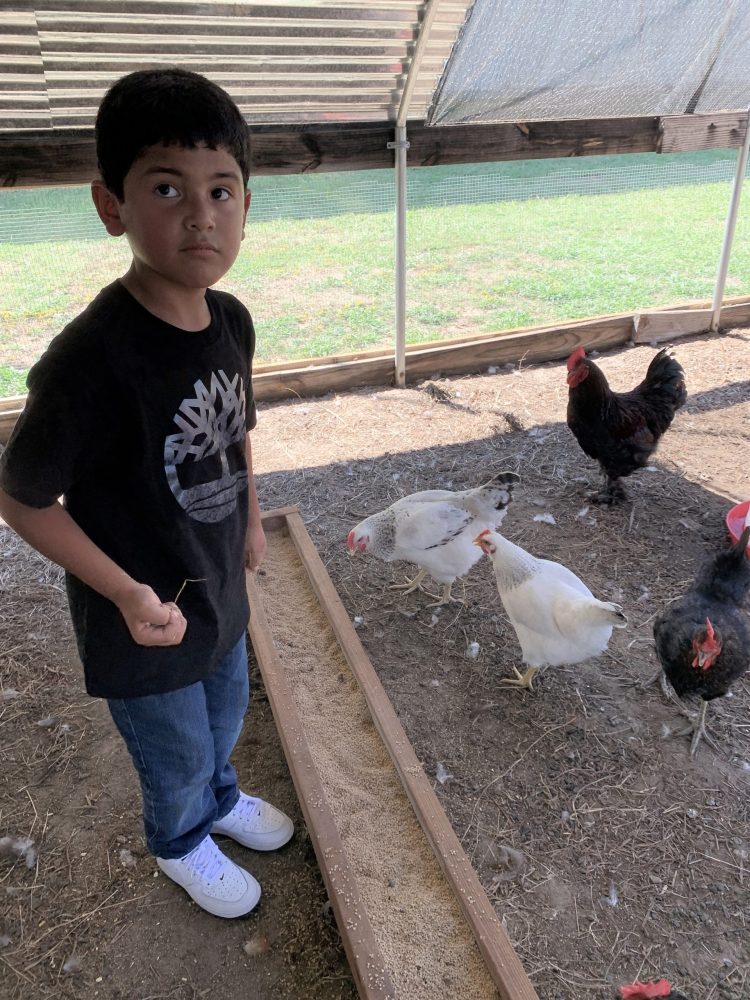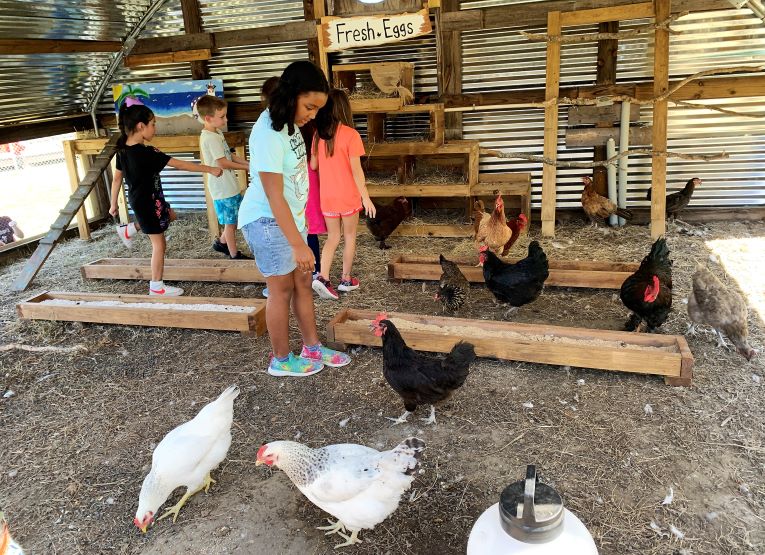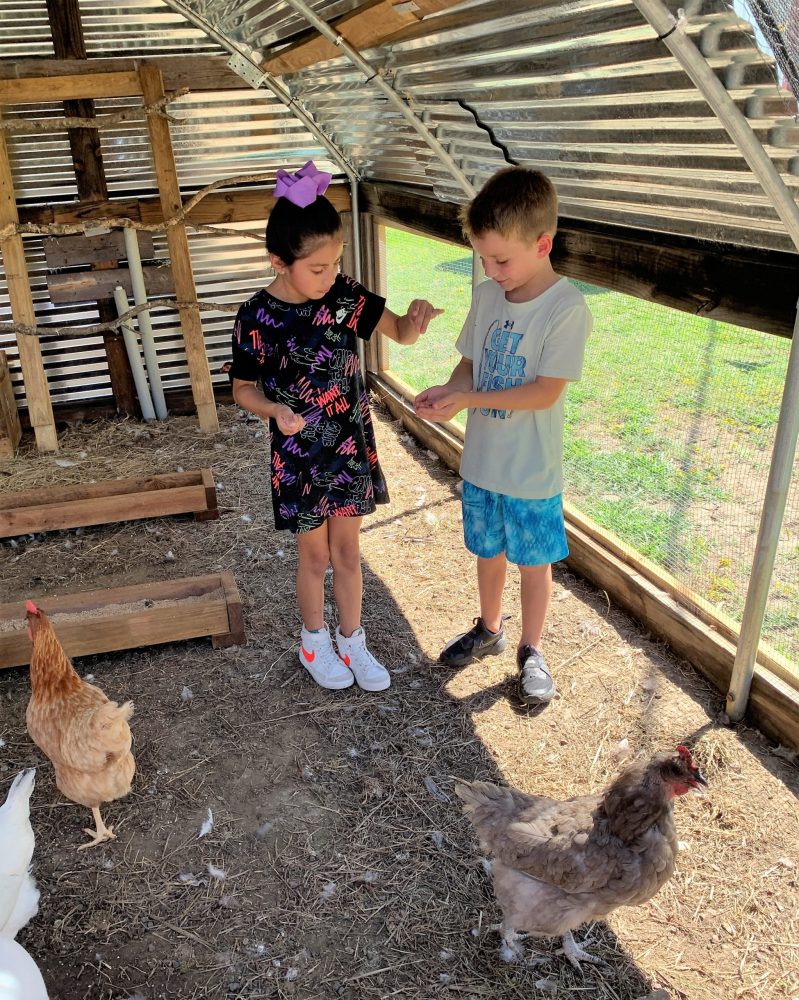As the North Hopkins Elementary classes began settling into another week of caring for the inhabitants of Cluckingham Palace, the school’s gifted and talented students were busy researching ways to help their feathered friends produce more eggs.
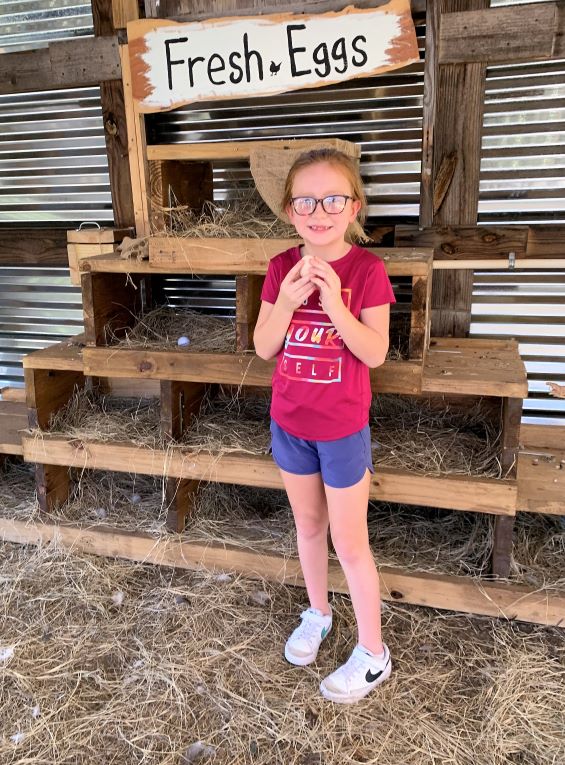
The hands-on enrichment project continues to be a learning experience for these younger students. Each class is designated a day during the week to care for the donated chickens, rotating to a new class of students daily until all classes at NHE from pre-kindergarten through sixth grade have taken a turn feeding, watering, and collecting the eggs the laying hens have produced. The students visit the pen shortly after classes begin each morning and again in the afternoon, shortly before classes end.
Eggs are stored safely until a full carton of eggs is available, then the GT students sell them on a first-come, first-served basis to school staff. The GT group researched prices garnered from based on the output by the laying hens, and developed a marketing plan. They notify school employees the eggs are available per their plan, then conduct business.
The week the birds arrived at school, donated by three local farming families, the hens were fed from the Cluck Bucket. For the most organic option, a marked bucket was provided for students to donate the fresh fruits and vegetables left at the conclusion of their school meals. That food then was carried out to Cluckingham Palace, where it was placed in a type of trough for the birds to enjoy a little fresh product.
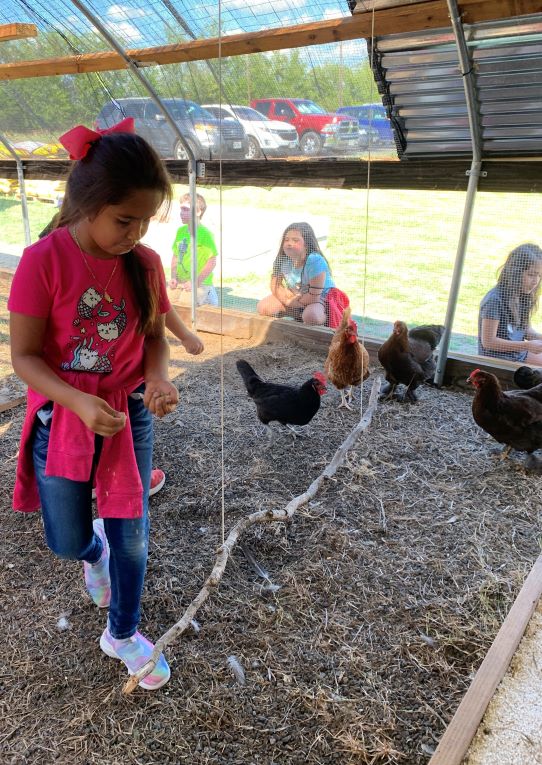
By Monday, the hens’ productivity had all but stalled. Instead of collecting at lest a couple of eggs daily, often with more fresh eggs collected in the afternoon than first thing in the morning, the birds seemed less included to lay in certain temperatures.
This was a good lesson in the risks involved in the agriculture business, especially those depending on the weather and other conditions beyond their control. All day Tuesday, the students collected only one egg. So, the GT kids began researching again, looking for ways to make the hens more comfortable or happier so they will produce more eggs. What they learned was that temperature can impact egg production, but a change in diet can help overcome that obstacle.
The GT students recommended switching the yard birds’ food. The Cluck Bucket filled with leftover fruits and veggies was replaced with buckets filled with hen scratch, feed and oyster shells, from which the elementary students scoop up a small handful of feed and pepper the floor of the chicken coop with it.
After the dietary change, Tegan Thompson was pleased to locate an egg when she and the other second graders in Amanda Caviness’ class took their turn tending the flock Tuesday afternoon.
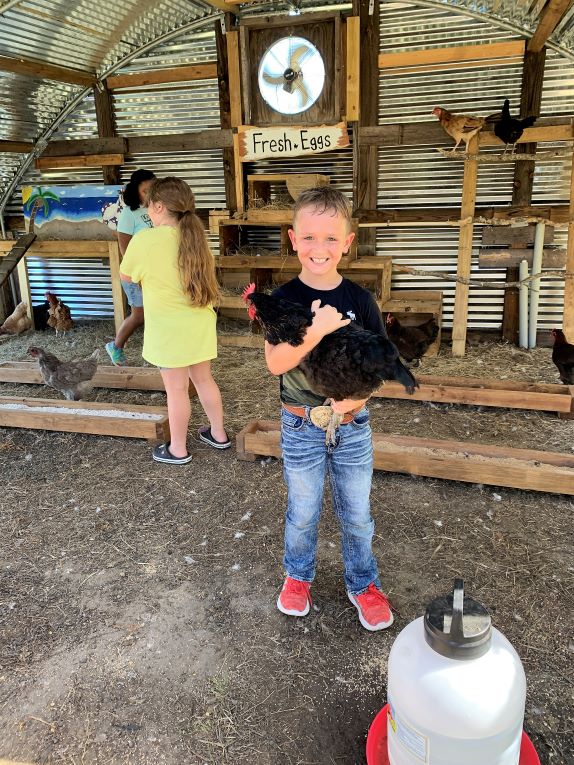
The birds seem to enjoy the attention, especially the regular treats the students sprinkle upon the Royal Floor. They don’t mind the youngsters among them, some offering a swipe or “pet.” The rooster is even tempered enough to enjoy being picked up and carried by students.
The project has involved the various groups in the school coming together building and readying the chicken coop for the arrival of the chickens, which vary in color and size, as well as community members who voted on the coop’s name in addition to helping with supplies and providing the birds. The project teaches responsibility, real life lessons in raising livestock for food while also reinforcing required TEKS lessons, in a real-world fun way illustrating the concepts discussed in the curriculum. And the kids seem to enjoy this hands-on, fun learning approach.
This is one of several new programs at North Hopkins ISD this year. Another hands-on project the school is excited about starting this year is construction of a raised vegetable garden that can be used to provide produce for the school cafeteria or potentially even the new Royal Birds, depending on the types, growth and success of the project.